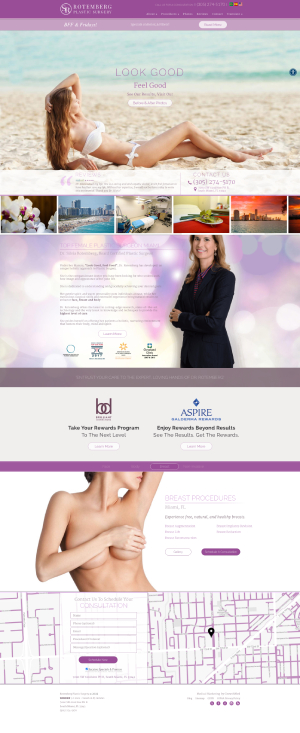Medical Advertising
Conveniently located to serve the areas of Undefined


Medical Advertising is also known by a few other names such as Search Engine Marketing (SEM), Paid Advertising, and Pay Per Click (PPC). Medical Advertising goes hand in hand with SEO. A lot can be gained from both sides of the coin to help each other optimize their respective campaigns.
Contents
Stellar ROI
SEM allows you to test strategies very quickly before investing an extensive amount of time in a new potential SEO strategy (content, user flows, landing pages, keywords, etc).
It is fairly common for agencies nowadays to quickly set up a Pay Per Click (PPC) campaign on Google with very high bids for keywords ($20+ per click) and forget about it. But that just throws your money down the drain.
The perfect advertising campaign is one where you pay the least amount possible for a conversion that leads to a procedure and that you are able to scale up (ability to achieve those conversions repeatedly). Below we are going to briefly list some marketing areas that we focus on to get your online ad campaign moving in the right direction.
Pay Per Click (PPC)
PPC is the easiest way to quickly target your desired phrases and instantly get people coming to your website. It is absolutely useful in testing that you have a simple user flow that doesn’t get in the way of the user getting the information they need before they contact you. If your user flow is complex or broken, you will easily be able to spot where users drop off before contacting you.
The hard part with PPC is getting the proper Ad positioning and low-cost click rate. The best position to be in is on the very top of Google’s search engine result page (SERP) in the main left column, where 59% of all ad clicks are done.
59% of users click on the first Advertisement in the first column on Google’s Search Engine Result Page.
But to get to this high prized spot, your ad has to have a high-quality score, a score based on how relevant your keywords and ad copy are to the search query. Some things you can do to get a high-quality score are having your ad’s headline text match the headline of the landing page you send them to when they click on your ad, also you need to ensure you are successfully keeping the potential patient on your site vs clicking immediately back to Google, among other techniques to derive a high score. Having a high-quality score, not only gets you to this most prized spot on Google’s SERP but also costs you less per click than everyone else is paying for the same keywords, giving you a huge competitive advantage. The difference in cost is quite substantial, someone with a high-quality score may have to only spend $0.05 per click for a given keyword, where someone which a poor quality score will have to spend $5.00 for comparative placement for the same keyword.
Remarketing
Remarketing lets you show ads to people who have visited your website before. When potential patients leave your website without contacting you, for example, remarketing helps you reconnect with them by showing ads for your procedures as they browse the web.
Have you ever looked at a product on Amazon for example and then went somewhere else like Facebook or another website and saw an ad for that exact same product you just looked at? That’s dynamic remarketing. Dynamic remarketing takes this to it to the next level by including the procedures that potential patients viewed on your website within the ads. While dynamic remarketing takes additional steps such as adding custom parameters to your website’s tag and creating a feed, it can deliver customized, higher-performance ads.
Remarketing is a wonderful thing, it usually has a lower cost per click and a higher conversion rate than a simple PPC campaign, because these people you’re targeting are considered warm leads. Google recently restricted remarketing for certain medical areas, but Google isn’t everything. Part of our job is to stay on top of all new technologies, offerings, platforms, etc that emerge every day. We constantly are trying new avenues that sometimes have higher conversions for less than tier 1 ad platforms like Google. For example, did you know that Facebook just launched their new platform called Atlas. Also for example, most likely you have been collecting email addresses and phone numbers for quite some time of people who have contacted you, but didn’t result in a procedure, did you know you could remarket to them by using their phone number or email address to target them on the web?
When you have a big tool chest, there is more than one way to get the job done.
Social Media Marketing
Social media marketing can work two-fold, for attention and conversions. Regardless of your budget, advertising on social media sites is the least expensive option over anything else when it comes to impressions. On average it costs about $0.25 per 1,000 impressions. Meaning, even if you do not want to put your dollars to work on Social Media sites for conversions, you should still at least spend a dollar a day for the awareness factor. You can perform the best surgical procedures on the planet, but if no one knows you exist they will not come to you when they are ready. Imagine every day 4,000 targeted people see your brand for $1.00 (“one dollar”), that’s brand marketing at its finest. Social Media also plays a pretty big role for SEO, but that’s another topic.
Email Newsletters
Similar to what was mentioned above, but instead of using the potential or past patient’s email address to target them on the web, you are targeting them in their email inbox. You should send a newsletter once or twice a month targeting these two different groups of patients if possible because by staying in their conscious mind when they are ready, they will think of you.
Tracking
We are extremely data focused because you can’t manage what you can’t measure. Without proper tracking, there is no way to know what is working from what is not. For example, we set up virtual phone numbers for individual ads, so we cannot only tell when someone emails you from an ad on your website, but also when someone calls you to set up an appointment originating from an ad. When someone clicks on an ad, the website will dynamically replace all of your office phone numbers with the proper virtual phone number for conversion tracking. This allows us to remove ads where people are clicking and costing you money, but are not converting into patients, and also, easily see which ads have great conversions and scale their budget accordingly. This is just one example of tracking, but we use everything in our arsenal from off the shelf platforms along with our own innovations in this area, such as LeadESP.
If you are interested, please contact us and we can discuss in-depth many more areas of marketing that we can manage for your success.



































































